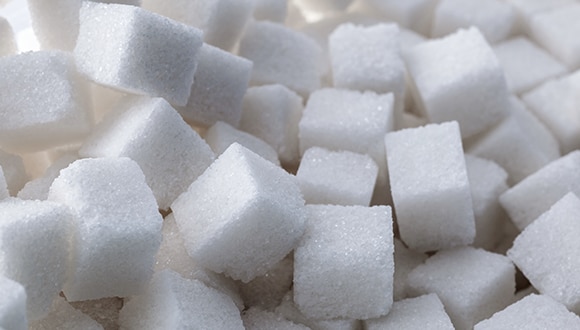The facts about sugar
Sugar has been getting a bad rap lately. Is it really that bad? How much is ok? We look beyond the headlines to the science of sugar.
Health Agenda magazine
April 2017
The debate over sugar isn’t cut and dried. On one hand, our bodies run on the energy produced by sugars. They’re a type of carbohydrate, and a source of easy fuel. On the other hand, we don’t need them: our bodies can convert nutrient-rich proteins into sugars, and the amount of added sugar in the average Western diet has increased dramatically over the past century – adding a lot of extra calories without accompanying nutrients.
The World Health Organization recommends only 5% of our daily calories should come from added sugar. Currently most of us eat double that or more, which – according to research published in JAMA Internal Medicine – is contributing to a dramatic increase in cardiovascular disease.
Science like this has prompted some healthy-eating advocates to lay the blame for many of our modern ills squarely on sugar, particularly fructose, a sugar that naturally occurs in plants but has been artificially added to many processed foods. Others point to a lot of the research still being uncertain – and some of the results being overblown – but most agree that there’s room to cut back on sugar in the average Australian diet.
According to the Australian Health Survey 2011–2012, we eat about 14 teaspoons of free sugars every day. The World Health Organization recommends just 6 (25g) for an adult.
‘Free’ sugars include those added to foods – a spoonful in your coffee or those added to processed foods for taste and longer shelf life – plus foods with high levels of sugar naturally present, such as honey, fruit juice and fruit juice concentrate.

How your body uses free sugar
Free sugars are treated differently to naturally occurring sugars in your digestive system. An apple contains 10g of sugar, but it’s combined with fibre and other nutrients, so your body digests it slowly, with a sustained release of insulin. A drink with the same amount of free sugars in it can lead to a fast spike in insulin levels, which can have negative health effects.
It takes some detective work to find where sugars are hiding. Australian food labels don’t differentiate between sugars that exist naturally within food (such as lactose in milk) and free sugars that have been added.
Ingredients lists are a better guide. Free sugars are listed as a separate ingredient and the higher up the list, the more there is. However free sugars often come in disguise. You might see barley malt, corn syrup, evaporated cane juice, high-fructose corn syrup, malt… all these and dozens more are just types of sugar.
Complicating things further, not all sugars act the same way in your body. Glucose is metabolised throughout the body, whereas fructose is predominantly metabolised by the liver, and has been linked to a host of metabolic issues. Table sugar is a blend of glucose and fructose, but many free sugars contain very high levels of fructose.
Debunking the myths
One problem in trying to understand the pros and cons of sugar is that there are so many old wives’ tales masquerading as fact. Some of them are obvious: eating sugar doesn’t give you diabetes, though consuming too much can lead to obesity, which is a major cause of type 2 diabetes. But others sound more plausible, even though it turns out the science doesn’t back them up.
Many people will tell you that sugar makes kids hyper. But multiple high-quality studies in which scientists gave some children sugar and others a placebo failed to show any difference in hyperactivity levels.
Then there are the marketing claims that natural sugars such as coconut sugar, date sugar and agave nectar are healthier than refined sugar.
To some extent, this is true. Most ‘natural’ options have more nutrients (such as zinc in maple syrup and calcium in rice malt syrup) than refined sugars, and some have a lower glycaemic index than refined sugar. However, most of those nutrients are only present in small quantities, and overall natural sugars are metabolised in the same way as refined sugar with pretty much the same calorific value.
Finding the balance
So are the health gurus right? Should we just say no to sugar? The science just isn’t conclusive at the moment. Sugar consumption seems to have declined in many Western countries, including Australia, since peaks in the 1990s, but we’ve seen no corresponding drop in obesity rates.
To say that sugar is to blame ignores the fact that reasons behind weight gain are complex. Higher calories play a part, but so does a sedentary lifestyle, and an increasing body of evidence says poor sleep is also an important factor.
A 2016 paper from the Queensland University of Technology that suggests sugar can be as addictive as nicotine, and just as hard to quit. For many, attempts at going cold turkey are doomed to fail.
What you can do
Moderation is a more achievable goal – cut back on free sugars in your diet by lowering the amounts you add to food and drinks. Check nutritional labels in shops, and make treats of healthier foods, such as nuts and fruits, rather than biscuits and lollies. Choose water or tea rather than sugary drinks, as sweetened drinks appear to have particularly negative health impacts beyond just cavities.
By becoming more aware of how much sugar is in our diet but still allowing a little sweetness in, you’re more likely to stick with a more nutritious eating plan. It seems that managing cravings, not total deprivation, may be the key to ongoing success whether you’re looking to lose weight, or just to eat more healthily overall.